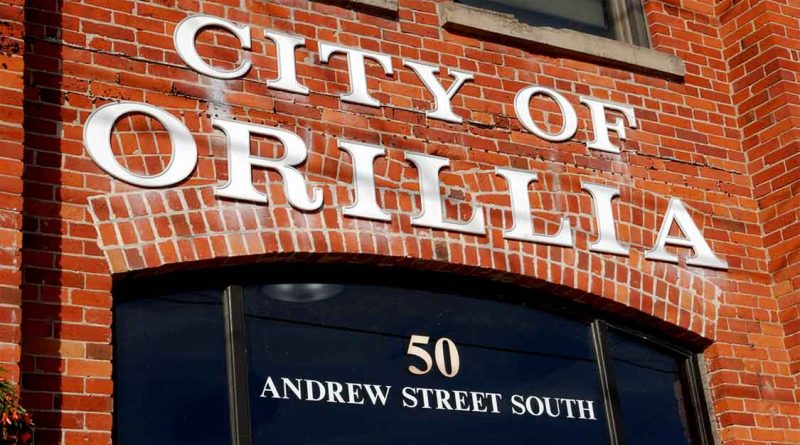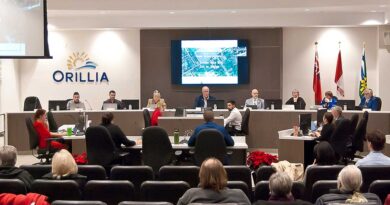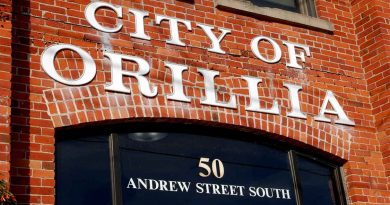Council Preview
By John Swartz
Monday afternoon’s Orillia council committee meeting at 4 p.m. is preceded by a closed session with three items on the agenda.
In the public meeting, the item of most interest is about the proposed transit terminal. Stantec Architecture Ltd. is delivering a 115 page report outlining the process of selecting a site for a terminal and particulars of what should be built.
Stantec initially reviewed 31 sites close to downtown and through two steps of evaluation arrived at 4 sites with the best possibilities to accommodate room for buses and a terminal building which would also serve as a parking garage.
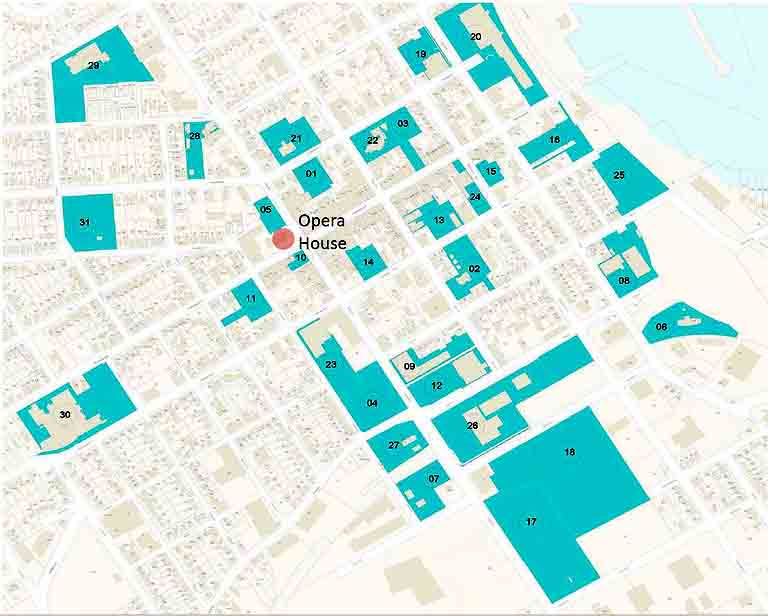
One of the considerations for the project is that 362 parking places in downtown lots are on land not owned by the City. Furthermore, two other lots on Mississaga street at the waterfront are only temporary until development along Centennial Drive occurs. Including a parking garage in the design considerations is part of the terminal project.
The site known as 26 West Street North in the study (the parking lot on Colborne opposite Orillia Central School) is not owned by the City and requires demolition of a building on West (which the City does not own) and replacement with the terminal building. Once constructed, there is no opportunity to expand for more bus routes in the future. Currently there are 6 routes and both of two favoured sites are laid out for 7 bays at this stage.
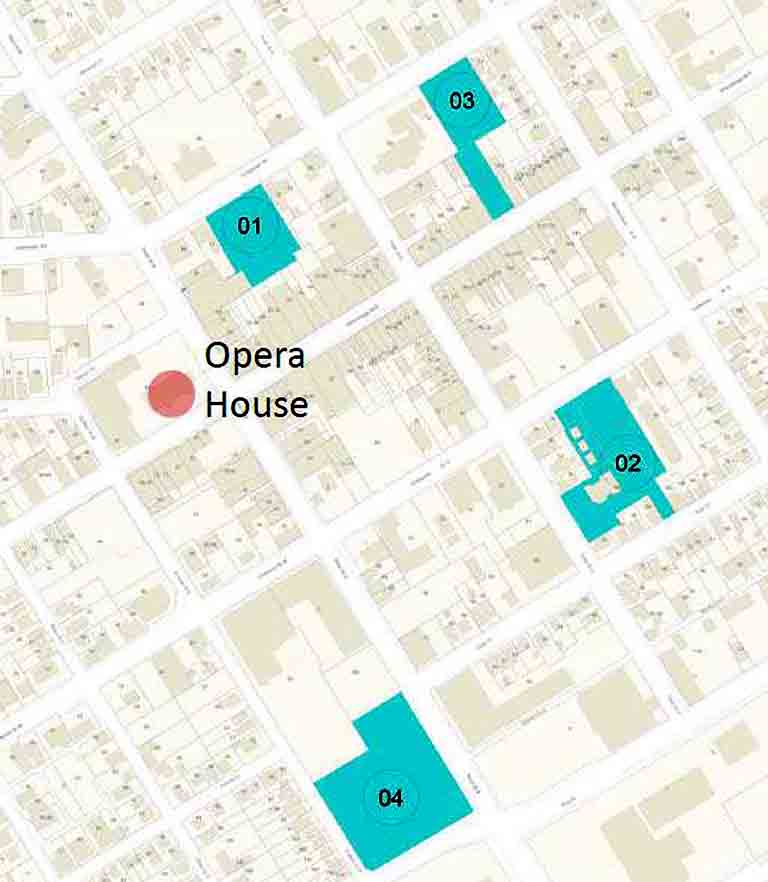
This site was the preferred location of the consultant, but the second most advantageous site, the soon to be old OPP building and Colborne Street parking lot, was the one staff directed the consultant focus on. The land is owned by the City, which would reduce the budget by $1.5 million or more by not having to buy land. It has access by buses from Colborne and Peter Streets, and a third access from Elgin Street for cars. If expansion is needed the property is bounded by houses on two sides which are less expensive to acquire and easier to demolish.
There are other more qualitative advantages to Colborne Street. Right now, with buses terminating on West and Mississaga Streets, one gets a sense of arriving in downtown and people can see many of the places they are going to line-of-sight. The OPP location has a grand entrance for pedestrians on Colborne and one can see the downtown and plan a footpath in several directions to their destination.
The 26 West site only has one pedestrian option onto West Street opposite the Opera House that is convenient, the exit to Colborne necessitates walking around the block to get anywhere.
With either choice, taking the buses off the street will result in fewer people on the street, which will give the appearance of the downtown being less busy. The Colborne Street location because of its design, will at least retain some of the feel downtown is active.
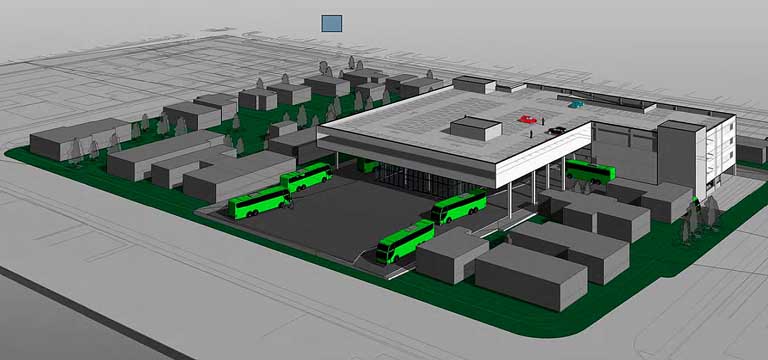
Staff recommend council choose the OPP property and give the go ahead for detailed design. To that end there are three options, to plan out surface level and terminal building for two levels (Elgin Street is essentially one level lower in elevation than Colborne) at an estimated cost of $11 to $17 million; second is to do the above plus one more level of the parking garage component at a total cost of $20 to $30 million; and third to build the full design (including another level of enclosed parking and rooftop parking) for a total cost of $26 to $39 million.
The City has $7.3 million of grants for terminal construction from the federal and provincial governments.
Pedestrian Mall
Of next most importance is the report on closing Mississaga and Peter Streets Friday and Saturday evenings this past summer.
As was widely known and anticipated, analysis by staff concluded it was a resounding success. A survey was conducted and 425 people responded, 98% said they attended at least one aspect of the program (shop, eat, artistic event, etc.) and 90% said they enjoyed the patios and 75% shopping.
Oddly, with a building edge to building edge room for maneuvering downtown, staff say they still received some complaints about bistro style tables blocking sidewalks.
Forty-four business were surveyed, 59% said it allowed them to increase sales, 64% said awareness of their businesses increased and staff highlighted one comment, “We think that without this project we would have closed our doors permanently.”

The survey revealed people wanted longer hours and would like to see more retailers take part.
Staff recommend to continuing the program next year, which makes sense since the likelihood of the pandemic being removed from consideration does not look favourable. Staff say they want to make applications for patios easier and reduce the number of staff involved with approvals.
They are recommending running the program from May 22 (Saturday, Victoria Day weekend) to September 3 (Friday, Labour Day weekend) with a budget of $55,000 to operate the program from the emergency relief reserve, and to continue eligibility for funding grants for patio construction from the Downtown Tomorrow CIP grant program.
Staff also recommend closing the streets only on Fridays because it, “anticipates that greater engagement from retail businesses may be achieved if the street closure is focused on one day of the week,” despite potential customers asking for longer duration street closings.
As part of making patios more viable for restaurants, staff is also recommending extending the regular patio lease season from April 15 to November 15, which is a several weeks longer either side than current.
Grape Island
The dispute between Grape Island residents, people with property near the Forest Avenue road allowance used to get to and from Grape Island and the City has now become an issue pitting island residents against each other.
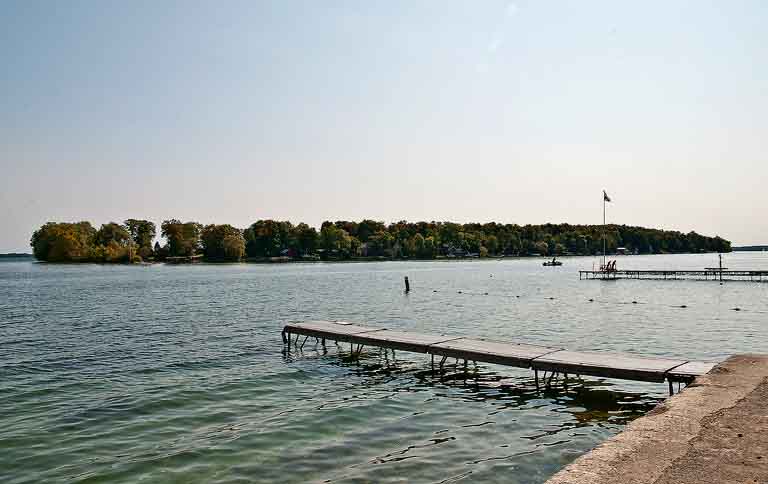
Because of the high cost for legal representation some island residents have left the Grape Island Property Owners Association. Because of this, the association told non-members they can’t use the waste collection facilities at the mainland parking lot the association has. The city refers to this as the Forest Avenue Depot and it collects garbage there just like any other address.
This leaves the residents out of the association with no choice but to take their garbage to the land fill. The City’s answer is to stop collecting garbage from the depot and make all residents take their garbage to the landfill. The problem is many residents leave the island on Sundays to return to other residences and the landfill is not open.
A second option is to make a temporary collection point, not on association land, and charge all the residence costs (estimated $10,000) for doing so.
Get The Snow Out Of Here
Council asked staff to report on the feasibility of to prioritize plowing one side of all streets where sidewalks exist on both sides of a street. The intention of the request was the hope, “prioritizing one side, that multiple passes could be achieved to reduce snow and ice buildup and create an improved service for the public.”
Staff say there are priority zones now, but are recommending reverting to a lower provincial standard because changing weather patterns may make it difficult to meet the current policy which opens the City up to liabilities. Staff say they will still give more attention to current priority areas, but if they can’t keep up with the weather, the City is off the hook.
Another option is to set policy to prioritized only one side of a street and this would allow the ability to clear a sidewalk on all streets sooner. This leads to a couple problems. Routes often have to backtrack, which is done on the opposite side of the street and hence it gets plowed – that won’t happen with a new policy. The side of the road not prioritized will still get plowed but only after all other streets are done, and if snowstorms come too quickly, it may be days before the non-prioritized side gets any attention, while the other side gets many clearings. There could also be negative effect on school crossings and bus stops which are on the wrong side of the road.
The Rest Of The Agenda
Of note in the consent portion of the agenda is next year’s council meeting schedule, specifically the recommendation to start all council meetings at 4 p.m. Until the pandemic meetings began at 6 p.m. and were temporarily moved to 4 p.m. The new time would remain regardless of pandemic restrictions being lifted.
Also, the hours at the landfill were shortened by half an hour because of pandemic restrictions and staff are recommending the 8:30 a.m. to 4 p.m. weekday hours be made permanent. Previously the landfill was open to 5 p.m.. Saturdays will remain at 8:30 a.m. to 1 p.m.
Two enquiry motions are on the agenda. Councillor Ralph Cipolla would like a report on the feasibility of reducing speed limits to 40 kph on all local roads. Councillor Ainsworth would like a report of the feasibility of operating an outdoor skating rink at Tudhope Park.
The closed session items are – 2020 Order of Orillia selections, union negotiations and a legal issue relating to the sale of 2 Hunter Valley Road.
![]()



This council meeting is a video conference and the chamber is closed to the public. The public can watch it live, on Rogers TV.
(Photos by Swartz – SUNonline/Orillia: Images Supplied)

